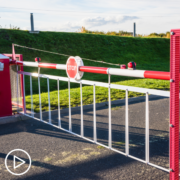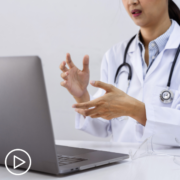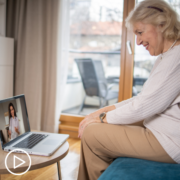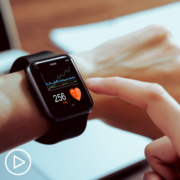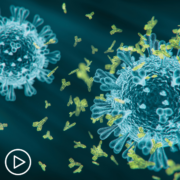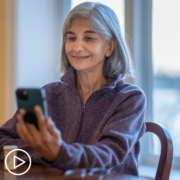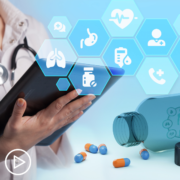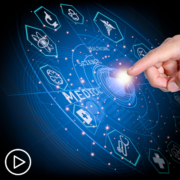Will Advancing Technologies Allow MPN Clinical Trials in Patient Homes? from Patient Empowerment Network on Vimeo.
Will myeloproliferative neoplasm (MPN) clinical trials at patient homes be enabled by advancing technologies? Experts Dr. Krisstina Gowin from University of Arizona Cancer Center and Dr. Ana Maria Lopez from Sidney Kimmel Cancer Center share their perspectives on clinical trials models that work well with remote models and an update about the hospital at home concept.
Download Resource Guide
See More from MPN TelemEDucation
Related Resources:
Transcript:
Lisa Hatfield:
Do you think that technology has progressed enough that clinical trials might allow a patient to be at home, maybe in a more remote area and monitored remotely? Whereas in the past, that same clinical trial required them to be at the facility? Do you think that we’ve progressed to that point in some clinical trials?
Dr. Krisstina Gowin:
You bet. Yeah. I think COVID out of necessity has forced us to do that. And I have in my own clinical trials, even with pharmacologic clinical trials conducted telemedicine visits that were approved by the sponsor. So the paradigm is shifting, and particularly when it is oral therapeutics, I think that’s really accessible when they’re IV subcutaneous, I think that has different challenges. Obviously you can’t do that as remote, but when their oral therapeutics are non-pharmacologic intervention, such as our integrative interventions, I think it really lands well to a more remote experience.
Lisa Hatfield:
Okay. And then would that require communication between the local oncologist and maybe someone like yourself, the investigator on that clinical trial to know what is going on with that particular patient? I assume that that communication would be ongoing?
Dr. Krisstina Gowin:
Absolutely. Always.
Lisa Hatfield:
Okay. Yeah. All right, great. Well, thank you for that information. So, Dr. Lopez, kind of a similar question for you. What are some examples of how technology is influencing cancer care right now?
Dr. Ana Maria Lopez:
Yeah, let me just add on the clinical trial question.
Lisa Hatfield:
Oh, Yes.
Dr. Ana Maria Lopez:
That there’s also the opportunity. Again, there were so many things that we thought, “Oh no, we just can’t be done.” But because of the necessity, necessity is the mother of invention, we do remote consent, so that was a big deal in the past. We can also do a televisit ahead of the appointment, and screen for the cancer clinical trials, people travel large distances for studies and instead of traveling four or five hours, and then to be told, “Oh, actually you don’t meet the criteria.” To be able to do all of that at a distance, to get the records, to get the images, to review all that needs to be reviewed. And then to say yes, and not only yes, but we can also do your consent at a distance in some situations.
And then when you come, there’s actually the more substantive, perhaps even the treatment. There’s also a large movement around hospital at home and that these patients that are eligible for that would be able…with digital support, be able to get hospital level care in some cases at home. So some of that may involve infusion, some of that…again, but that visual connectivity and in the past you really had to kind of conceptualize it, and it was kind of space aging to talk about it. But we now, we’ve all done FaceTime, so I think we all really can understand what it entails, so tremendous shifts and, we want to try to keep that momentum going for our patients. So, I do think that, there’s so many ways that technology has impacted cancer care, even when we talk about the electronic record and patients accessing the electronic record and patients having the opportunity to go into a portal and to see their labs, to see their reports…
To be able to track their changes. All of that is really, really powerful. You know, patients with…the most common I think is patients with diabetes who track their blood sugar sometimes to the minute and they can say, “Oh, I ate that and now I see the impact.” So the opportunity for monitoring, the opportunity for also bringing in experts. So let’s say there’s a patient with a rare disease and the expert is elsewhere, there might be the opportunity to bring people together. We do tumor boards. That’s just part of what we do in cancer care. And also as many…there are health systems now so that it’s not one hospital, it’s multiple hospitals together where we can bring all of those folks together, bring in local expertise, regional expertise, national expertise, all for the patient’s benefit.
So there are so many ways that technology even something as simple as the note. Now this is something we experimented with and it’s still in experimentation phase, but there were these Google classes where you could interact with the patient and as I’m talking, the Google glass would record kind of the conversation and would come up with some sort of a structure for the note. So for what that encounter had been like. So there are lots of ways of how do you capture natural language in real time to really help the workflow, the documentation process. So I think there’s aspects to help the patient, to help the families, to help the clinical teams and to help everybody work together.
Lisa Hatfield:
Great. Thank you. And you talked about the patient portal, and I’m one of those patients at fault of seeing a lab result before my doctor saw it and calling him or sending a message via MyChart saying, “Hey, this is going up. What’s wrong with this?” So I’m sure you don’t have to mention any names. I’m sure you’ve seen the challenges of, digital health too, are having that patient portable or portal accessible to patients. So anyway, just wanted to throw that out there that I’m sure that brings challenges to you. Also few little challenges here and there.
But at the same time, that’s so good, right? It’s so good that patients are engaged. It’s so good that you’re engaged. And I think as long as we’re communicating that yes, you may see this before me, so you may have questions and then, we just get together and answer the questions.
Share Your Feedback:
Create your own user feedback survey
